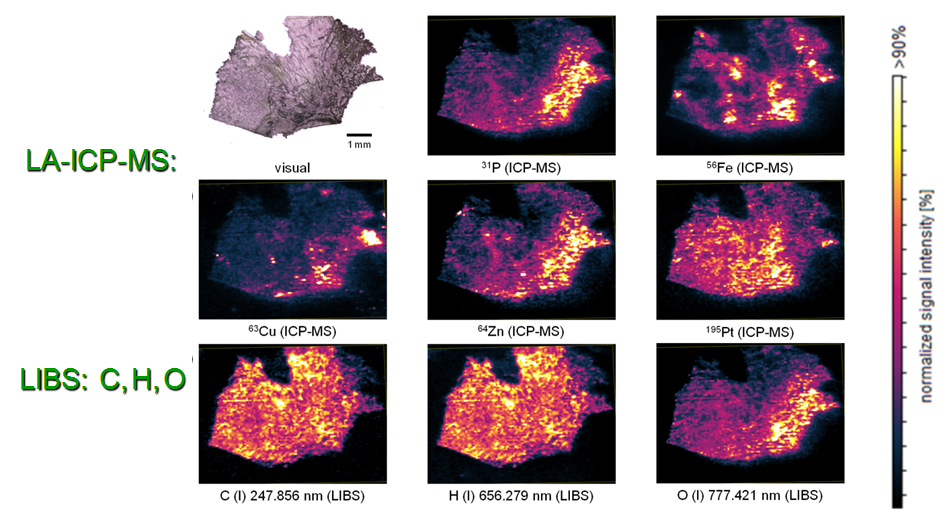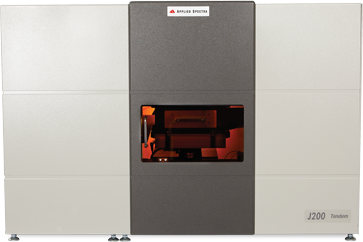A Review of the 2018 Winter Conference on Plasma Spectrochemistry
by Alexander Bolshakov, Ph.D.
 The 2018 Winter Conference on Plasma Spectrochemistry took place during the week of January 8 – 13 at the Omni Amelia Island Plantation resort in Florida. The conference agenda included 50 unique short courses for professional development and training, almost 300 original scientific presentations, 12 special symposia, 36 invited lectures, five heritage lectures, four workshops, four poster sessions and a three-day exposition of commercial instrumentation.
The 2018 Winter Conference on Plasma Spectrochemistry took place during the week of January 8 – 13 at the Omni Amelia Island Plantation resort in Florida. The conference agenda included 50 unique short courses for professional development and training, almost 300 original scientific presentations, 12 special symposia, 36 invited lectures, five heritage lectures, four workshops, four poster sessions and a three-day exposition of commercial instrumentation.
Applied Spectra scientists and our research collaborators actively participated in the conference program featuring an invited lecture delivered by Dr. Richard Russo, a short course given by Dr. Jhanis Gonzalez, several oral and poster presentations, and exhibition demonstrations. Our presentations were devoted to the latest developments and emerging applications in LIBS and LA-ICP-MS, and Tandem LA–LIBS, a highly innovative and powerful technology for performing simultaneous LIBS and LA-ICP-MS. A growing number of applications use these techniques for rapid three-dimensional chemical imaging of a wide variety of materials including advanced microstructures, biological, and geological samples.
The 2018 Winter Conference was reasonably dominated by a good number of presentations on chemical imaging capabilities using LIBS and LA-ICP-MS, but also to a smaller extent glow discharge, X-ray, MALDI-MS and nano-SIMS spectroscopy. Dr. Detlef Günther from ETH Zürich delivered a plenary lecture on this subject describing LA-ICP-MS as a mature micro-analytical technique that is used for high spatial resolution imaging, mapping and depth profiling. Dr. Günther demonstrated that a combination of pulse-resolved laser ablation with ICP-ToF-MS is particularly promising because it facilitates high-speed signal acquisition for elemental imaging. Lateral resolution of LA-ICP-MS can be in a low-micron realm (down to 2.5 μm), while depth resolution is in a sub-micron range.
LA-ICP-MS for elemental bio-imaging was an important theme
Several other speakers emphasized the great importance of LA-ICP-MS for elemental bio-imaging in life sciences and medical applications. Very high sensitivity of LA-ICP-MS enables three-dimensional trace chemical characterization of biological tissues. It is especially important for pathological tumors subjected to investigation of efficiency of anti-cancer drugs. High spatial resolution of chemical imaging is required because cancer cells are unevenly distributed forming heterogeneous clusters of different shapes and sizes. In medical and toxicological studies the elemental maps provide critical information about metabolism, metabolic disorders, transport, distributions and interactions of elemental species between different tissue types and organ structures.
Multiple examples of bio-imaging by LA-ICP-MS were presented at the conference. These examples included mapping of phosphorus and platinum in multicellular colon cancer spheroids; copper in liver tissue samples; gadolinium traces in brain tissue of humans; multielement (Mn, Fe, Zn, Cu) distributions in rat brain samples; zinc and copper changes in successive phases of pig melanoma tissue; 3D imaging of Cu, Ni and Zn in a water flea, elemental distributions and growth pattern in anthropological materials (teeth, hair, bones); bioaccumulated toxic metals and metalloids (Pb, Sb, Zn) in pericarp, germ, endosperm and embryo tissues of corn seeds.
LIBS can revolutionize biological, medical, and clinical research
Multi-elemental imaging obtainable by all-optical LIBS technique embraces the advantages of simplicity, compactness, relatively low cost and compatibility with the conventional microscopes. As LIBS instrumentation has become commercially available, it can revolutionize biological, medical and clinical research. For example, pathologists often encounter disparate exogenous materials in clinical specimens but they cannot easily identify the nature and the origin of these substances. LIBS microanalysis and chemical imaging will greatly facilitate such diagnoses. LIBS can acquire also the distributions of the macronutrients (C, H, O, N, S, P), micronutrients (Ca, Na, Mg, Sr) and trace elements (Fe, Zn, Cu, etc.).

Bio-imaging of human tumor sample using Tandem LA–LIBS with LIBS to provide complementary information about organic elements
While bio-imaging was certainly a dominant theme at this Winter Conference, many other kind of samples were characterized using three-dimensional imaging by LIBS and LA-ICP-MS. Some examples included geological samples (particularly, determining “mixed” ages distributed throughout rocks and minerals); 3D images of electrode structures in Li-ion battery cells revealing migration of Li ions; elemental mapping of electronic circuit packages; profiling nanoparticle layers in photovoltaic cells; penetration of impurities (Al, Ni, Fe, V, Cu, Ti) into spent catalysts; 2D mapping of shale rock sections; and profiling of smartphone protective glass composition (i-Phone versus Samsung).
Applied Spectra at the Winter conference
At the leading edge of chemical imaging, the J200 Tandem LA–LIBS instrumentation has recently emerged. Developed by Applied Spectra, the J200 Tandem LA–LIBS is an all-in-one rapid 3D chemical and isotopic analyzer for solid samples. This technique acquires simultaneous optical and mass spectra for every ablating laser pulse. LA-ICP-MS provides trace elemental and isotopic compositions, while LIBS is used for measuring light metals (Li, Be, B), non-metals (H, C, N, O) and halogens (F, Cl, Br) that are difficult or impossible to measure in conventional ICP-MS systems. The Tandem instrument expands the dynamic range of analysis from sub-ppb levels of traces to high % levels of major constituents, increases the elemental coverage, and enables signal normalization, data fusion and correlation.
Furthermore, Applied Spectra presented the latest advance in Tandem LA–LIBS instrumentation: a new J200 Femto iX LA with compact design and superior performance. Femtosecond laser ablation creates neat cylindrical craters without thermal effects and generates narrow particle size distributions that significantly improve precision and accuracy of the analysis compared to ordinary nanosecond pulsed ablation. Other benefits of femtosecond ablation include reduction in heat dissipation and related volatility effects, minimization of elemental and isotopic fractionation, and relaxation of matrix-matching requirements needed for quantitative calibration. The J200 Femto iX LA Instrument is easily upgraded to the Tandem LA–LIBS instrument due to the LA platform design that allows optical emission collection and LIBS detector integration.
Looking to the future
While there continues to be active research on improving accuracy performance of LIBS and LA-ICP-MS, accurate quantitative analysis of diverse materials is becoming possible for these techniques based on more advanced data processing approaches. The conference highlighted a number of presentations that considered both univariate and multivariate data analysis (chemometrics) Various regression schemes were investigated such as partial least squares, support vector machine, soft independent modeling of class analogies (SIMCA), artificial neural networks and multi-scale, multi model schemes. None of them is universal or prevailing but different models are beneficial in different measurements.
Overall, the 2018 Winter Conference on Plasma Spectrochemistry provided an excellent networking opportunity and a variety of chances to get updated on the fundamental and applied developments in the areas of contemporary analytical plasma spectrochemistry.




